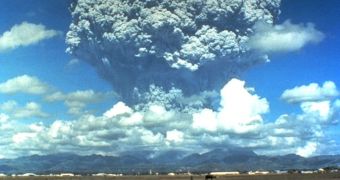The largest volcanic eruptions that took place on our planet most likely caused an important shift to appear in worldwide rain patterns, in the sense that certain areas got drenched more, whereas others were subjected to floods and excessive rain.
New data show that the phenomenon is a lot more widespread than originally thought, which means that the rain pattern disturbances affect a lot more regions on Earth than researchers first estimated.
The new work was carried out by researchers based at the Lamont-Doherty Earth Observatory, which is located at the Columbia University, in Ithaca, New York.
Tree ring analysis experts there looked at the traces that about 54 large eruptions left in the rings of trees over the past 800 years, and determined that central Asia usually dries out following an eruption.
On the other hand, regions in southeast Asia, such as for example Myanmar, Laos, Thailand, Cambodia and Vietnam, get more precipitations than usual. These findings are the exact opposite of the ones made with climate computer models.
For the new investigation, researchers analyzed trees from more than 300 locations on the Asian continent. Experts at the Observatory's Tree Ring Lab conducted the work.
“Volcanoes can be important players in climate over time. We might think of the study of the solid Earth and the atmosphere as two different things, but really everything in the system is interconnected,” says expert Kevin Anchukaitis.
The scientist is based at the Columbia University, and he is also the lead author of a new research paper detailing the findings. The work is published online in the top journal Geophysical Research Letters.
One of the primary mechanisms through which volcanoes interact with, and force changes in, atmospheric patterns is via the particles it emits during eruptions.
This type of particulate matter can block out incoming solar radiation, bringing about a cooling of the environment. When happening at larger scales, this type of event is called volcanic winter.
Some climate experts now want to use this ability volcanic emissions have to devise geoengineering schemes to modify Earth's atmosphere.
These researchers believe that pumping massive amounts of tiny sulfate particles into the air would reduce the amount of sunlight reaching the ground, therefore prompting the planet to cool.
However, the new study shows that some more investigations need to be carried out beforehand, to ensure that all of the implications associated with such an action are known and understood, Our Amazing Planet reports.

 14 DAY TRIAL //
14 DAY TRIAL //